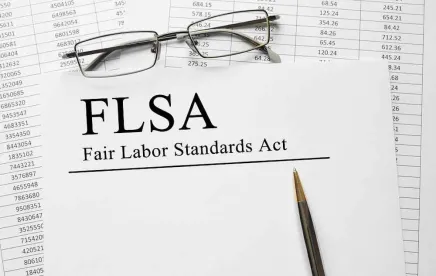On October 13, 2022, the United States Department of Labor ("DOL") published its proposed rule (the "Proposed Rule") for determining whether a worker should be classified as an employee or an independent contractor under the Fair Labor Standards Act ("FLSA").
This Proposed Rule is the DOL's second attempt under the Biden Administration to rescind and replace regulations on the same topic published within the last two weeks of the Trump Administration. The Proposed Rule is meant to be more consistent with longstanding judicial precedent interpreting the FLSA, which dates back to 1947.
Generally, the FLSA requires covered employers to pay non-exempt employees minimum wage, at least, and overtime pay rates for hours worked in excess of 40 in a workweek. The FLSA does not, however, cover independent contractors, which incentivizes employers to hire independent contractors rather than employees. Unfortunately, the FLSA does not define the term "independent contractor" and only vaguely defines "employee." To add further confusion, there is no single, uniform test accepted by all government agencies to determine who qualifies as an independent contractor.
Recap of How We Got Here
On January 7, 2021, the Trump Administration's DOL published a rule revising how the DOL would interpret independent contractor status under the FLSA (the "2021 Rule"). Under the 2021 Rule, the focus of the "economic realities test" was centered on two core factors: (1) The nature and degree of the worker's control over the work; and (2) the worker's opportunity for profit or loss. The 2021 Rule, which was the first of its kind for the DOL, was set to become effective on March 8, 2021.
Shortly after President Biden was inaugurated into office, the DOL delayed the effective date of the 2021 Rule. Subsequently, on May 6, 2021, the DOL published a final rule withdrawing the 2021 Rule altogether (the "Withdrawal Rule"). However, the Withdrawal Rule did not create a new test simultaneously with the withdrawal of the 2021 Rule. Instead, the Withdrawal Rule attempted to leave the economic realities test, as it existed prior to the 2021 Rule, in place to determine whether workers were independent contractors. Earlier this year, a federal court in Texas vacated the withdrawal on procedural grounds and reinstated the 2021 Rule.
So What's the Proposed Rule?
The Proposed Rule is framed as a reversion to the analysis used prior to the 2021 Rule, which aligns with the uniform application of the economic realities test used by the circuit courts. The Proposed Rule is a "totality-of-the-circumstances analysis, considering multiple factors to determine whether a worker is an employee or an independent contractor under the FLSA." The Proposed Rule seeks to take into account all facts relevant to the economic dependence of a worker and whether the worker is in business for themself, which the DOL contends were limited by the 2021 Rule. In short, the DOL believes that the 2021 Rule did "not fully comport with the FLSA's text and purpose as interpreted by courts and departs from decades of case law applying the economic reality test." Based on that belief, the DOL removed the core factors of the 2021 Rule, de-emphasized the relevancy of the actual practice of the parties (as opposed to what may be contractually or theoretically possible) within the 2021 Rule, and provided another factors test.
Specifically, the DOL proposes six factors to help determine proper classification. The DOL further notes that these factors may be non-exhaustive, that no single factor or subset of factors is determinative of worker classification, and the weight of each factor may depend on the facts and circumstances at hand. The six factors under the Proposed Rule include:
-
the opportunity for profit or loss depending on managerial skill;
-
the investments by the worker and the employer;
-
the degree of permanence of the work relationship;
-
the nature and degree of control;
-
the extent to which the work performed is an integral part of the employer’s business; and
-
the skill and initiative of the workers.
Conclusion
While companies can avoid significant wage, tax, and other obligations by engaging independent contractors instead of employees, companies should also understand the risks of misclassifying employees as independent contractors. Classification of workers under the DOL's Proposed Rule involves careful consideration of the factors listed above, and employers expose themselves to liability in several areas, such as workers' compensation claims, audits related to the company's failure to pay unemployment or payroll taxes, and wage and hour claims for back pay and overtime wages, if they incorrectly classify a worker as an independent contractor. Companies must also remember that other federal, state, and local laws may require a separate analysis for worker classification.
Under the DOL's Proposed Rule, workers are more likely to be deemed employees than independent contractors, and it is likely that many workers currently classified as independent contractors are misclassified. While the Proposed Rule is unlikely to go into effect until the middle of 2023, companies should begin to consider how the proposed rule may impact their current workforce and closely scrutinize their contractor relationships. Companies concerned about the effects of the Proposed Rule may submit comments on it to the DOL until November 28, 2022. For further guidance to avoid misclassifying workers, companies should evaluate the worker's position and job duties with an attorney and determine the appropriate measures to implement.




 />i
/>i
